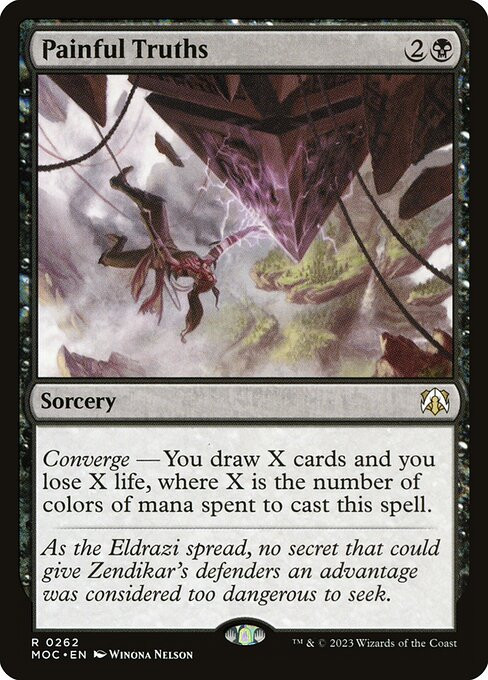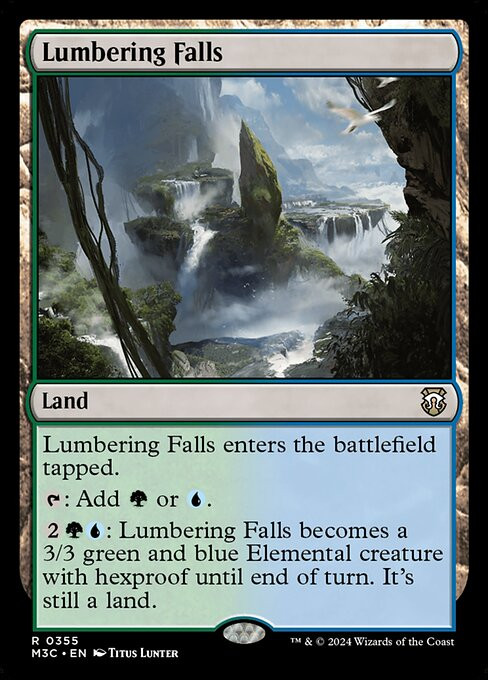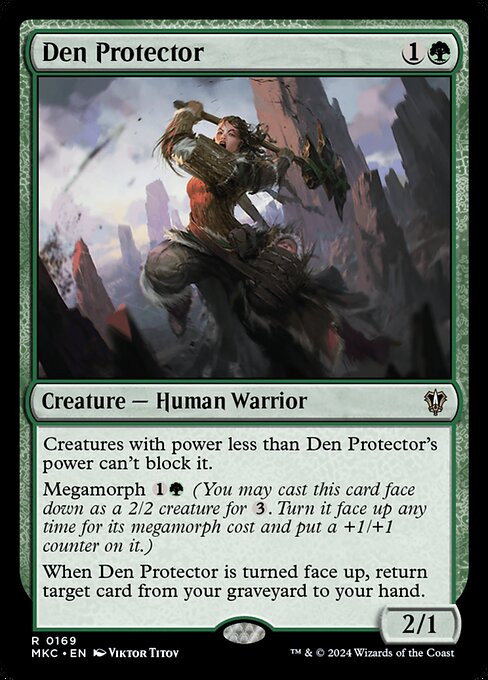Hey everyone, Strickles here, diving into the exciting release of Pioneer Masters on MTG Arena! Dropping tomorrow, this set is a massive leap forward in bridging the gap between MTG Arena’s Explorer format and the broader, competitive Pioneer landscape. The aim is clear: to inject a significant portion of Pioneer’s key competitive cards into Arena, paving the way for potential Pioneer tournaments right on our favorite digital platform.
However, it’s important to acknowledge that Pioneer Masters isn’t a complete Pioneer conversion for Arena. While it brings in many crucial pieces, some cards from Pioneer will still be absent. The good news is that most of these omissions are less competitively relevant, unlikely to be sorely missed in the heat of battle. Yet, there are always those beloved, quirky, or simply fun cards that we wish would make the cut.
So, in this article, we’re breaking down Pioneer Masters. We’ll celebrate the “hits”—the competitively strong cards that will shake up Explorer. We’ll also explore some personally exciting inclusions, cards that might not be top-tier but are sure to inspire some fun brewing. Finally, I’ll get a little personal and share my “misses”—those cards absent from Pioneer Masters that I, for purely subjective reasons, would have loved to see.
Let’s kick things off with the undeniable highlights of the set: the hits!
Hits
Chained to the Rocks
For players new to the nuances of mana bases, Chained to the Rocks might seem a bit puzzling. Mountains in a white deck? Experienced players, however, will immediately recognize the elegant efficiency of this removal spell.
The beauty of Chained to the Rocks lies in its synergy with dual lands like Sacred Foundry, which conveniently counts as both a Plains and a Mountain. Triomes like Raugrin Triome or Jetmir’s Garden further expand its usability. This means decks that can reliably produce both white mana and have access to Mountain lands (through duals or tri-lands) gain access to an incredibly mana-efficient removal spell, capable of dealing with a wide range of threats in the Pioneer format.
In competitive Pioneer, Chained to the Rocks is a staple in multi-colored control and midrange strategies, particularly in Bring to Light and Enigmatic Incarnation decks. These archetypes, often spanning four or even five colors, easily satisfy the land requirements for this powerful enchantment, making it a premier removal option in those color combinations.
Hallowed Moonlight
Hallowed Moonlight is a quintessential sideboard card, designed to disrupt specific strategies and swing matchups in your favor. It’s a versatile tool with several key applications in Pioneer.
Firstly, it effectively counters graveyard recursion strategies, most notably hindering the resurgence of Arclight Phoenix from the graveyard. Secondly, its instant speed allows for reactive plays against powerful sorcery-speed spells like Collected Company or Indomitable Creativity. Casting Hallowed Moonlight in response to these spells essentially functions as a Negate, preventing their impactful effects from resolving.
For slower white-based control decks that seek flexible answers in sideboard situations, Hallowed Moonlight offers a valuable alternative to cards like Containment Priest. It provides a broader range of utility, disrupting multiple strategies beyond just creature-based shenanigans.
Kytheon, Hero of Akros // Gideon, Battle-Forged
The arrival of Kytheon, Hero of Akros in Pioneer Masters signifies the near completion of Mono-White Humans in Explorer! This iconic one-drop creature was arguably the last key piece missing from the archetype, and its inclusion is a significant boost to the deck’s competitiveness.
Kytheon is a potent threat right from turn one. It has the potential to transform into Gideon, Battle-Forged as early as turn three, unleashing a powerful planeswalker that can maintain pressure on the opponent. Gideon’s abilities allow it to continue the aggressive assault or act as a defensive wall, forcing creatures to attack it rather than the player.
While Kytheon might not catapult Mono-White Humans to the very top of the Pioneer tier list overnight, it undeniably elevates the deck’s consistency and overall power level. Keep an eye on Mono-White Humans in the Explorer metagame; Kytheon could be the catalyst it needs to become a more prominent force.
Hidden Strings
Hidden Strings is the crucial piece that completes the Lotus Field combo deck, a deck that is widely considered the premier combo strategy in Pioneer. Explaining the intricacies of the combo in text can be challenging, but the mana-generating potential is immense.
Imagine a scenario with two Lotus Field lands on the battlefield. Tapping them produces a staggering eight mana. Casting Hidden Strings and using its Cipher ability on both Lotus Field allows you to untap them. This results in a net mana gain of four mana each time you cast Hidden Strings. This exponential mana generation is the engine that fuels the Lotus Field combo, enabling explosive turns and game-winning plays.
If you’re unfamiliar with the Lotus Field combo archetype, a quick search on YouTube for gameplay examples is highly recommended. Understanding how this deck operates is crucial for anyone playing in the Explorer format, as it’s poised to become a significant presence on the ladder with the release of Pioneer Masters. Knowing how to play against it is just as important as understanding how it works.
Jace, Vryn’s Prodigy // Jace, Telepath Unbound
Jace, Vryn’s Prodigy might not command the $100 price tag it once did during its Standard dominance, and it’s true it currently sees minimal competitive play in Pioneer. The primary reason? It’s vulnerable to virtually every common removal spell in the format.
However, dismissing Jace entirely would be a mistake. If left unchecked, Jace, Vryn’s Prodigy remains an incredibly potent card. The ability to loot multiple times, filling your graveyard and refining your hand, before flipping into Jace, Telepath Unbound and gaining access to spell recursion is undeniably powerful.
The challenge for Jace isn’t its inherent strength but finding the right shell in Pioneer. Beyond its susceptibility to removal, there simply hasn’t been a deck archetype that optimally leverages its unique skillset. But, with Pioneer Masters injecting new cards and potentially shifting the metagame, perhaps Jace’s time to shine in Pioneer is on the horizon.
Call me overly optimistic, but I’m eager to revisit Jace, Vryn’s Prodigy in the Explorer format and see if Pioneer Masters provides the support it needs to become a competitive player once more.
Dark Betrayal
Dark Betrayal earns its spot on the “hits” list primarily due to the current Pioneer metagame. Rakdos Midrange and Rakdos Sacrifice decks are format staples, heavily featuring black creatures. In this context, Dark Betrayal is a surgical, mana-efficient answer.
Being able to remove key Rakdos threats like Archfiend of the Dross, Unstoppable Slasher, or the ubiquitous Sheoldred, the Apocalypse for a single black mana at instant speed is incredibly valuable. In post-sideboard games against Rakdos strategies, Dark Betrayal is poised to be a crucial tool for disrupting their game plan and gaining a significant advantage.
Painful Truths
 Painful Truths MTG Card
Painful Truths MTG Card
Painful Truths is another card hailing from Standard’s past that, as of yet, hasn’t found a consistent home in Pioneer. The primary obstacle seems to be the absence of a dominant three-color midrange archetype in the format.
However, for those of us who are fervent fans of three-color midrange strategies, particularly Mardu Midrange (as regular readers of my Explorer articles might know), Painful Truths is a welcome addition. It’s a card I’m excited to slot into sideboards against midrange and control opponents. The potential for card advantage, drawing three cards for just three mana, is immense, offering exceptional three-for-one value in grindy matchups. If a viable three-color midrange deck emerges in Pioneer, Painful Truths is likely to be a key component.
Tasigur, the Golden Fang
It’s somewhat surprising that Tasigur, the Golden Fang hasn’t yet established itself in Pioneer. Similar to Jace, the issue isn’t Tasigur’s individual power, but rather the lack of a perfect deck to call home. Rakdos decks, while powerful, lack the green or blue mana needed to consistently activate Tasigur’s ability. Even my beloved Mardu Midrange struggles to accommodate its mana requirements.
Despite these current limitations, Tasigur, the Golden Fang is a card to watch closely. If you’re playing Jund, Sultai, Dimir, or Golgari color combinations, Tasigur deserves serious consideration as a potent mid-game threat. Left unanswered, it can generate substantial card advantage and board presence. Strategic delving is crucial when casting Tasigur; prioritize exiling cards you don’t want your opponent to return, increasing the likelihood they’ll give back the spells you desire when you activate its ability.
Reckless Bushwhacker
For Standard players familiar with Imodane’s Recruiter, Reckless Bushwhacker offers a similar, yet even more aggressive effect. While functionally comparable, Reckless Bushwhacker boasts a lower surge cost, making it one mana cheaper when you can trigger its surge ability.
While Reckless Bushwhacker is less impactful as a topdeck in an empty-handed scenario (requiring the surge cost for its buff), it shines in decks designed to flood the board with creatures. If you’re exploring convoke-based strategies or token-heavy archetypes in Explorer, Reckless Bushwhacker can provide the explosive burst of damage needed to close out games. It adds an extra layer of reach and aggression to creature-centric strategies.
Gladecover Scout
At first glance, Gladecover Scout might seem underwhelming: a simple 1/1 hexproof creature for one mana. However, those with experience in older formats like Modern will remember the terror of facing this card and its cousin, Slippery Bogle, in “Bogles” or “Auras” strategies.
Gladecover Scout’s strength lies in its hexproof ability, which makes it an exceptionally resilient aura and equipment carrier. Hexproof prevents opponents from efficiently removing your enchanted creature with targeted removal spells like Fatal Push, avoiding the dreaded two-for-one scenario where your aura investment is neutralized by a cheap removal spell. If you enjoy building decks that stack auras or equipment onto a single, evasive threat, Gladecover Scout is a powerful and efficient starting point.
Sylvan Caryatid
Continuing the theme of hexproof creatures, Sylvan Caryatid provides resilient mana ramp, protected from targeted removal thanks to its hexproof ability. While not as explosively fast as Llanowar Elves or Elvish Mystic, Sylvan Caryatid offers a safer, more reliable mana acceleration option, particularly in slower, more controlling green decks aiming to reach four or five mana spells.
Its ability to tap for mana of any color further enhances its versatility. This makes Sylvan Caryatid particularly well-suited for Bring to Light decks, which often require access to a wide spectrum of colors to cast Bring to Light and the diverse spells it searches for. However, any slower green deck seeking stable and protected ramp should consider Sylvan Caryatid as a top-tier mana dork.
Bring to Light
Bring to Light itself is the namesake and linchpin of the Niv-to-Light archetype in Pioneer. This deck strategy revolves around using Bring to Light to tutor Niv-Mizzet, Reborn directly into play, leveraging Niv-Mizzet’s ability to refill your hand with powerful multicolored spells.
Beyond its role in Niv-to-Light, Bring to Light is inherently powerful in slower, controlling strategies due to its incredible flexibility. It adapts to various game states; when facing aggressive decks, it can fetch a sweeper like Shatter the Sky. When card advantage is needed, it can grab Niv-Mizzet, Reborn. To answer problematic permanents, it can retrieve Maelstrom Pulse.
As I’ve emphasized in previous articles, control decks thrive on flexibility. Cards like Bring to Light provide precisely that, allowing control players to react to their opponent’s strategies when necessary, or proactively advance their own game plan when the coast is clear. This adaptability is what makes Bring to Light a format-defining card.
Destructive Revelry
If you’re piloting any form of Gruul Aggro in Pioneer, Destructive Revelry should be a staple in your sideboard. It’s an upgrade to basic enchantment and artifact removal.
The added bonus of dealing two damage to the targeted permanent’s controller turns a simple Naturalize effect into a more aggressive, game-ending tool. This extra damage can be crucial in racing situations, allowing your sideboard answer to also contribute to whittling down your opponent’s life total and pushing for lethal damage. In matchups against artifact-heavy or enchantment-based strategies, Destructive Revelry offers both disruption and reach.
Ghor-Clan Rampager
Speaking of Gruul Aggro, Ghor-Clan Rampager evokes a sense of nostalgia for me, reminding me of my Naya Zoo days in Modern. Beyond the sentimental value, Ghor-Clan Rampager is genuinely a powerful card that might be currently underappreciated in Pioneer.
The Bloodrush ability, granting +4/+4 and trample for just two mana, is incredibly efficient. Furthermore, as Bloodrush is an activated ability, it bypasses counterspells, ensuring your pump spell resolves even against control decks. If you enjoy the aggressive pump spell dynamic of Monstrous Rage in Standard or Pioneer, Ghor-Clan Rampager is a card worth exploring for your next aggro deck iteration.
Creature Lands from Zendikar
 Needle Spires MTG Card
Needle Spires MTG Card
 Lumbering Falls MTG Card
Lumbering Falls MTG Card
The complete cycle of enemy-colored creature lands from Battle for Zendikar and Oath of the Gatewatch makes its way into Pioneer Masters, offering a significant upgrade to two-color mana bases in Explorer. These lands are simply solid inclusions in most two-color decks, adding both color fixing and late-game utility.
Shambling Vent has consistently been considered the best of the cycle. Its low activation cost and lifegain ability provide both offensive and defensive flexibility, making it valuable in a range of matchups. Hissing Quagmire, with its deathtouch ability, is also particularly strong, functioning as both a deterrent to attackers and a potent attacker in its own right.
The remaining three creature lands, Wandering Fumarole, Needle Spires, and Lumbering Falls, are all valuable additions to two-color decks. When constructing your next two-color Pioneer deck in Explorer, these creature lands should be high on your list of considerations for mana base optimization.
Urborg, Tomb of Yawgmoth
Urborg, Tomb of Yawgmoth can initially appear confusing to newer players. A land that doesn’t inherently tap for mana? However, its true power lies in its ability to turn all lands, including itself, into Swamps, in addition to their other types. This seemingly subtle effect has profound implications for deckbuilding and mana consistency.
Urborg is a staple in Mono-Black and Rakdos decks, primarily as a way to enable utility lands while maintaining reliable access to black mana for color-intensive spells. The frustration of drawing a hand full of utility lands like Mutavault, Field of Ruin, and Fountainport in a Mono-Black deck, only to be unable to cast your Sheoldred, the Apocalypse, is a real pain point that Urborg directly addresses. It ensures that your utility lands contribute to your core game plan without sacrificing color consistency.
Misses
The “misses” section is intentionally shorter and more personal. These are cards that, while perhaps not format-warping, hold a special place in my MTG memories, and I would have loved to see them added to Arena with Pioneer Masters for brewing and nostalgic purposes.
Soulfire Grand Master
Soulfire Grand Master offers two key abilities. The first, granting lifelink to your spells, can turn burn spells like Lightning Strike into virtual Lightning Helix. However, the ability that truly excites me is its activated ability to return instants and sorceries to hand.
In the past, I’ve used Soulfire Grand Master to create powerful loops and generate card advantage. Returning a Thoughtseize to hand to double-Thoughtseize an opponent, or looping Kolaghan’s Command to force a discard during each of their draw steps, effectively locking them out of non-instant spells, were memorable and enjoyable plays.
Soulfire Grand Master holds a lot of fond memories for me. While realistically it’s likely too slow for the current Pioneer metagame, I would have relished the opportunity to reactivate its ability one more time in Explorer.
Retreat to Coralhelm
Retreat to Coralhelm is admittedly less of a Pioneer card and more suited for Historic or Timeless, primarily due to its powerful synergy with Knight of the Reliquary. The combo works by activating Knight of the Reliquary to sacrifice a land and search for another land from your deck. The newly entered land triggers Retreat to Coralhelm, allowing you to untap Knight of the Reliquary.
Repeating this process, as long as you have Plains or Forests to sacrifice, allows you to grow Knight of the Reliquary to enormous proportions, creating a massive threat to attack with. While this combo might be considered tame by modern combo standards, it would have been a fun and unique archetype to explore in the Arena formats had Retreat to Coralhelm been included in Pioneer Masters.
Den Protector
 Den Protector MTG Card
Den Protector MTG Card
Den Protector is another card that sparks fond memories, though it’s likely too slow and fragile for contemporary Magic. The intended gameplay pattern involves playing Den Protector face down as a morph on turn three, then flipping it face up later in the game. Upon flipping, it returns a card from your graveyard to your hand and becomes a 3-power attacker.
However, in today’s fast-paced Pioneer format, a 3-mana 2/2 simply doesn’t cut it, especially when games are often decided by turn four or five. Similar to Soulfire Grand Master, I used to loop Den Protector with Kolaghan’s Command, creating a recurring discard and card recursion engine. Each turn, I could force my opponent to discard a card and return another Den Protector from my graveyard to my hand, setting up the loop for the following turn.
Sadly, Den Protector likely lacks a competitive home in Pioneer. Nevertheless, I still wish it had been included in Pioneer Masters for the sake of nostalgia and the potential for off-meta brewing, even if it meant losing a few games with it.
Sylvan Advocate
Sylvan Advocate is a reasonably efficient creature, offering a 2/3 vigilance body for two mana. This stat line is solid for both attacking and blocking in the early to mid-game. Later in the game, Sylvan Advocate scales into a 4/5 and buffs all your lands, providing a significant late-game boost.
I was hoping Sylvan Advocate would be part of Pioneer Masters, envisioning a deck built around creature lands and land synergies, perhaps alongside cards like Blossoming Tortoise. An all-in creature land strategy could be a unique and fun archetype to explore.
Sylvan Advocate arguably has Pioneer-playable stats for its mana cost. However, the format is dense with strong two-mana creatures, and unless you’re specifically focusing on creature lands or ramp strategies, other two-drops might simply offer more impactful effects. Despite this, I still would have been happy to see it included in the set for brewing possibilities.
Wrapping Up
Pioneer Masters is undeniably a fantastic set for the Explorer format on MTG Arena. With this release, nearly all of the top-tier competitive decks in Pioneer become viable in Explorer, bringing the Arena format much closer to mirroring the full Pioneer experience.
Hopefully, Wizards of the Coast will continue to bridge the remaining gap, adding more Pioneer-legal cards through Anthology releases or future sets. This would allow for even more of the “misses” I’ve mentioned, and countless other cards that players are surely eager to see, to become playable options across various Arena formats.
I hope this article has provided valuable insights as you prepare to jump into Explorer with the release of Pioneer Masters! You now have a clearer picture of the new competitive decks poised to emerge, as well as some exciting individual cards to experiment with in your own brews. Pioneer Masters is packed with even more cards than I could cover here, so be sure to explore the full set list yourself!
As always, I wish you the best of luck in your matches and a fantastic week of Magic!

